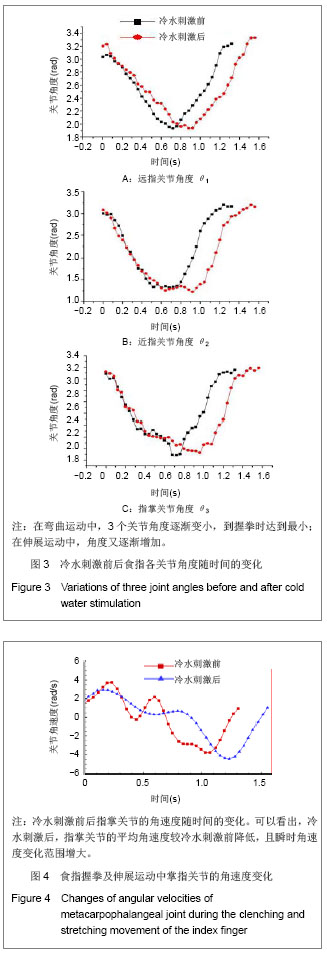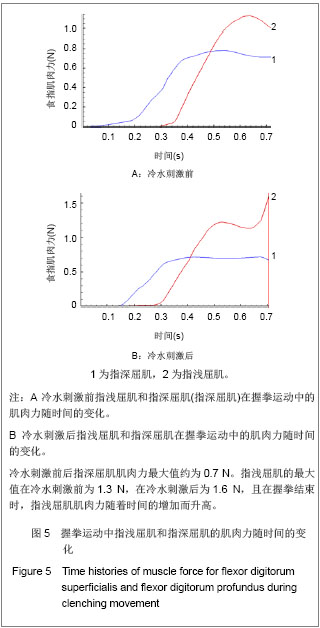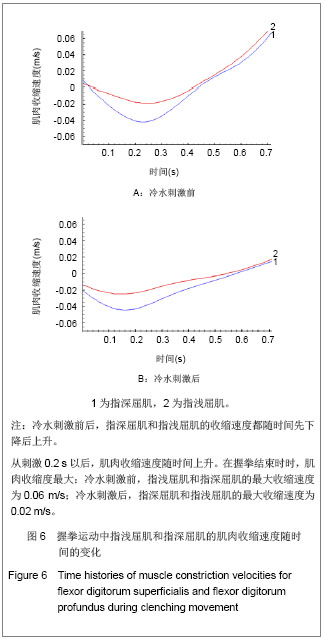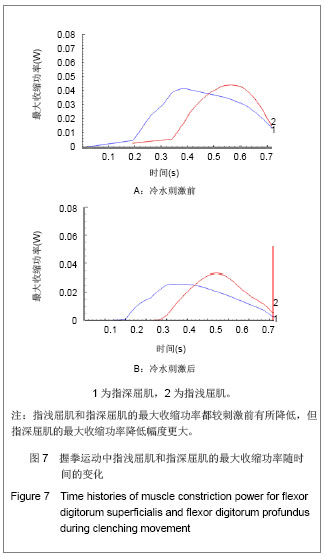| [1]Huang LP, Zhao ZB, Wang PY, et al. Zhongguo Kangfu Yiyue Zazhi. 2005;20(7):504-506.黄力平,赵振彪,王佩云等,年龄相关的运动功能减退神经机制研究:磁源性影像证据[J].中国康复医学杂志,2005,20(7):504-506.[2]Li Y, Liu, SW, Cao LH, et al. Zhonghua Wuli Yixue yu Kangfu Zazhi. 2003;25(6):335-339.李艳,刘世文,曹丽华,等.正常人三种模式手指运动时脑激活区域的功能磁共振研究[J].中华物理医学与康复杂志,2003,25(6):335-339.[3]Zhai HC, Guo XP, Weng XC, et al. Zhongguo Linchuang Kangfu. 2005;9(44):1-3.翟洪昌,郭雪萍,翁旭初,等.健康成人手指运动脑功能成像数据聚类与反卷积的比较研究[J].中国临床康复,2005,9(44):1-3.[4]Bundhoo V, Haslam E, Birch B. A shape memory alloy-based tendon-driven actuation system for biomimetic artificial fingers, Part 1: design and evaluation. Robotica. 2009;27(1):131-146. [5]Wang H, Zhao CK, Ji YQ, et al. Northeasten University (Natural Science). 2006;27(8):891-894.王宏,赵长宽,姬彦巧.人类手指运动轨迹的计算机仿真[J].东北大学学报(自然科学),2006,27(8):891-894.[6]Wang H, Ji YQ, Zhao CK, et al. Northeasten University (Natural Science). 2006;27(9):1018-1021.王宏,姬彦巧,赵长宽,等.基于肌肉电信号控制的假肢用机械手的设计[J].东北大学学报(自然科学),2006,27(9):1018-1021.[7]Liu, B, Zhang YR, Ren DW, et al. Ji Qi Ren. 2007;29(3): 204-218.刘博,张玉茹,任大伟,等,人手食指运动学建模[J].机器人,2007, 29(3):204-218.[8]Wu JZ, Dong RG, Rakheja S, et al. Simulation of mechanical responses of fingertip to dynamic loading. 2002;(24):253-264.[9]Wu JZ, An Med Eng phys KN, Cutlip RG, et al. Analysis of musculoskeletal loading in an index finger during tapping. J Biomech. 2008;41(3):668-676.[10]Kamper DG, George Hornby T, Rymer WZ. Extrinsic flexor muscles generate concurrent flexion of all three finger joints. J Biomech. 2002;35(12):1581-1589.[11]Shao HW, He Y, Lei T, et al. Yiyong Shengwu lixue. 2010; 25(4):308-312.邵宏伟,贺缨,雷霆,等.冷刺激下食指的运动学和动力学特性研究[J].医用生物力学,2010,25(4):308-312.[12]Yokogawa R, Hara K. Measurement of distribution of maximum index-fingertip force in all directions at fingertip flexion/extension plane. J Biomech Eng. 2002;124(3): 302-307. [13]Falero-Cuevas FJ. An integrative approach to the biomechanical function and neuromuscular control of the fingers. J Biomech. 2005;38(4):673-684.[14]Miyata N, Yamaguchi K, Maeda Y. Measuring and modeling active maximum fingertip forces of a human index finger. Proc. the 2007 IEEE/RSJ International Conf. on Intelligent Robots and Systems. San Diego, 2007.[15]Miyata N, Kouchi M, Mochimaru M, et al. Finger joint kinematics from MR images. Proc. the 2005 IEEE/RSJ International Conf. on Intelligent Robots and Systems. 2005. |




.jpg)
.jpg)
.jpg)
.jpg) 按近年来,有关人手指运动学模型的研究如下:(按下载量排序):
按近年来,有关人手指运动学模型的研究如下:(按下载量排序): .jpg) 验结果验证了本课题组较早运用简化的滑轮铰链模型所获结果[11] 。同时,基于Anybody平台的食指模型避免了使用如滑轮铰链模型中所用的被动扭矩经验公式,更有利于实际应用。由于在骨骼肌肉模型中只考虑了指浅屈肌和指深屈肌2条肌肉,目前只能模拟弯曲过程。在进一步的工作中,将会在现有骨骼肌肉模型添加其他手指肌肉,包括:指深肌,骨间肌和蚯状肌,并与神经控制模型相结合,进一步考察受冷水刺激前后,手部肌肉收缩与大脑兴奋程度之间的关系。同时,可以通过实验监测手指屈伸运动过程中血液灌注率的变化,并与肌肉力的变化进行对照,探讨肌肉力与血流变化的相关性。
验结果验证了本课题组较早运用简化的滑轮铰链模型所获结果[11] 。同时,基于Anybody平台的食指模型避免了使用如滑轮铰链模型中所用的被动扭矩经验公式,更有利于实际应用。由于在骨骼肌肉模型中只考虑了指浅屈肌和指深屈肌2条肌肉,目前只能模拟弯曲过程。在进一步的工作中,将会在现有骨骼肌肉模型添加其他手指肌肉,包括:指深肌,骨间肌和蚯状肌,并与神经控制模型相结合,进一步考察受冷水刺激前后,手部肌肉收缩与大脑兴奋程度之间的关系。同时,可以通过实验监测手指屈伸运动过程中血液灌注率的变化,并与肌肉力的变化进行对照,探讨肌肉力与血流变化的相关性。